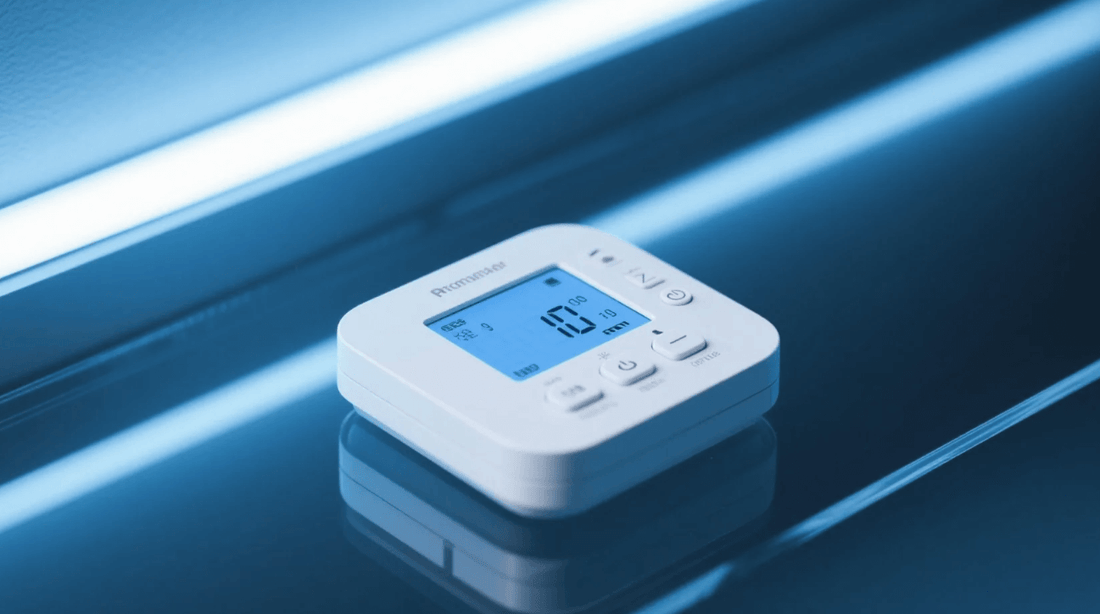
How to Use a Programmable Thermostat
Share
In the smart home era, a programmable thermostat empowers users to efficiently manage temperature according to daily routines, reducing energy waste while keeping comfort levels ideal. When properly used with heating, ventilation, and air‑conditioning (HVAC) systems, it delivers tangible savings (10–15% annually) and seamless climate control.
1. What Is a Programmable Thermostat?
A programmable thermostat is an electronic HVAC controller with schedules built in. Users define target temperatures at different times of day—such as wake, leave, return, and sleep—and the device adjusts automatically. Unlike manual thermostats, it helps manage climate even when no one is home.

2. Core Features and Benefits
2.1 Energy Savings Through Setback
Lowering or raising temperatures by 7–10°F for about 8 hours daily can save up to 10% on heating and cooling bills. The programmable feature ensures this occurs without constant manual intervention.
2.2 Automated Scheduling
Most models support 4–6 daily time blocks or weekly schedules (e.g. weekday/weekend patterns), minimizing the need for frequent adjustments.
2.3 Enhanced Comfort and Routine Alignment
Leveraging built-in clocks, a programmable thermostat starts heating or cooling before users wake or return home, ensuring comfort without energy waste.
3. Step‑by‑Step: Setting Up Your Thermostat
3.1 Installation and Power Requirements
Turn off HVAC power before starting.
Remove the old unit, label wires, and install the backplate securely.
Most units demand a C‑wire for power—consult a professional if none is present.
3.2 Programming Time and Schedules
Set current time and day for accurate operation.
Define temperatures for:
Wake (when you get up),
Leave (outdoors),
Return (before you arrive),
Sleep (night settings).
Program separate schedules for weekends if desired.
3.3 Fine‑Tuning and ‘Setback’ Strategy
Avoid setting too extreme a difference; 7–10°F is optimal.
Ensure thermostat is centrally placed, unobstructed by drafts, direct sun, or equipment.

4. Best Practices for Smart Use
4.1 Use Pre‑Set Schedules Reliably
Avoid manual override; follow scheduled blocks for consistent savings .
4.2 Maintain Moderate Temperature Gaps
Minimize energy waste due to prolonged recovery cycles.
4.3 Keep It Free and Central
Ensure airflow reaches the device—no covering by furniture or curtains.
4.4 Perform Annual Calibration
Re‑check clock, temperature readings, and replace batteries if needed .
5. Smart Thermostats: Next‑Gen Advantages
While still programmable thermostat at heart, smart versions add:
Learning algorithms: adapt based on behavior
Remote control via app, Wi‑Fi, voice assistants
Geo‑fencing: adjusts when users approach or leave
Energy reports and demand response support
Studies show smart thermostats can reduce energy use 10–20% more than programmable models.

6. Common Pitfalls & Fixes
| Problem | Solution |
|---|---|
| No C‑wire | Hire technician to add dedicated power cable |
| Confusing interface | Use manuals or installer guidance |
| Incorrect placement | Reposition to an airflow‑reliable area |
| Manual overrides too often | Trust schedules and let the system manage |
7. Integrating With Smart Home Systems
Programmable thermostats often work with:
Smart assistants: Alexa, Google, Siri
Smart hubs: allowing automation scenes, climate routines
Energy platforms: utility demand‑response programs
Ensure protocol compatibility (Wi‑Fi, Zigbee, Z‑Wave) before adding to your home network.
8. Real‑World Impact: Energy and Comfort Gains
Savings: 10–15% reduction in heating/cooling expense
Convenience: temperature tailored to daily life, no constant manual adjustments
Environmental: lesser HVAC runtime lowers carbon output
Usability: simpler interfaces and apps mean better user interaction
FAQ
Q1: How often should schedules be updated?
A: Seasonally adjust, especially for daylight variation or major routine changes.
Q2: Is a smart thermostat necessary if I already have a programmable one?
A: Not essential, but smart units bring automation, learning, and remote control beyond basic scheduling.
Q3: What if my thermostat struggles with Wi‑Fi?
A: Position your router nearer or add a Wi‑Fi extender; or use a Wi‑Fi booster.
Q4: Can vacation mode help?
A: Yes—most units offer a vacation or hold mode to keep energy low during extended absences.
Conclusion
Mastering how to use a programmable thermostat offers straightforward energy savings, enhanced convenience, and smarter home control. By following setup best practices, maintaining schedules, avoiding common mistakes, and integrating with smart systems, any homeowner or renter can enjoy a more efficient, comfortable, and sustainable living environment.
Let me know if you'd like model recommendations, wiring diagrams, or app setup guides!